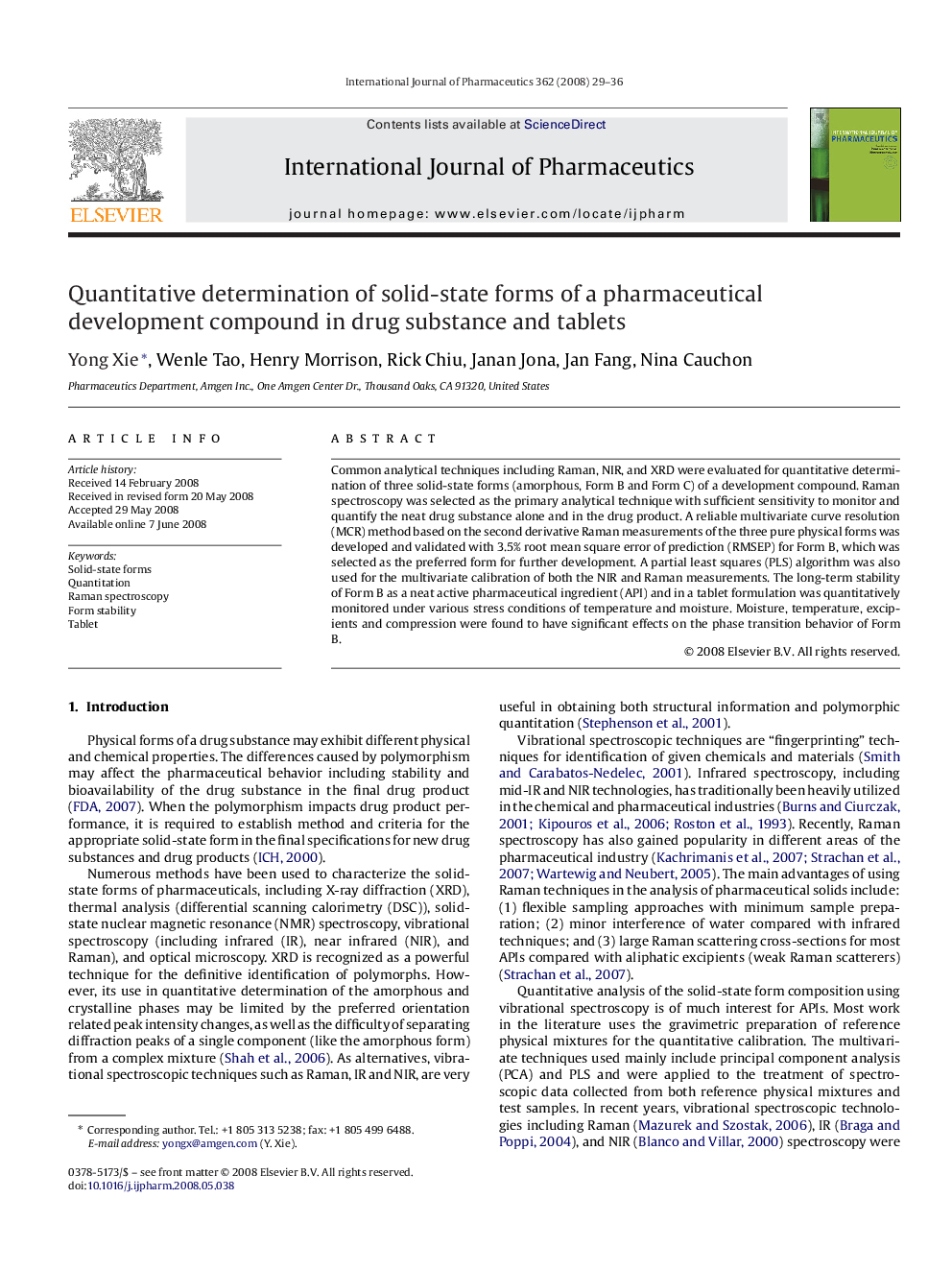| Article ID | Journal | Published Year | Pages | File Type |
|---|---|---|---|---|
| 2505125 | International Journal of Pharmaceutics | 2008 | 8 Pages |
Common analytical techniques including Raman, NIR, and XRD were evaluated for quantitative determination of three solid-state forms (amorphous, Form B and Form C) of a development compound. Raman spectroscopy was selected as the primary analytical technique with sufficient sensitivity to monitor and quantify the neat drug substance alone and in the drug product. A reliable multivariate curve resolution (MCR) method based on the second derivative Raman measurements of the three pure physical forms was developed and validated with 3.5% root mean square error of prediction (RMSEP) for Form B, which was selected as the preferred form for further development. A partial least squares (PLS) algorithm was also used for the multivariate calibration of both the NIR and Raman measurements. The long-term stability of Form B as a neat active pharmaceutical ingredient (API) and in a tablet formulation was quantitatively monitored under various stress conditions of temperature and moisture. Moisture, temperature, excipients and compression were found to have significant effects on the phase transition behavior of Form B.
